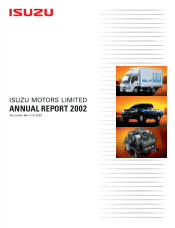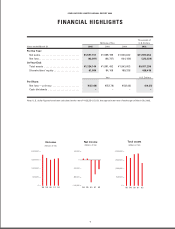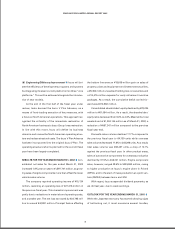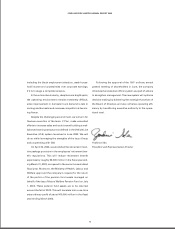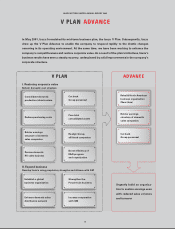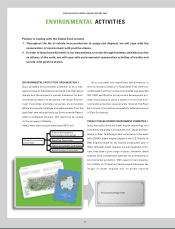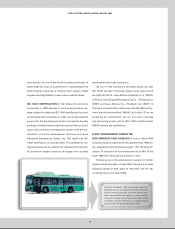Isuzu 2002 Annual Report Download - page 6
Download and view the complete annual report
Please find page 6 of the 2002 Isuzu annual report below. You can navigate through the pages in the report by either clicking on the pages listed below, or by using the keyword search tool below to find specific information within the annual report.
ISUZU MOTORS LIMITED ANNUAL REPORT 2002
4
(8) Engineering Efficiency Improvement
Isuzu will bol-
ster the efficiency of development programs and systems
by integrating its seven current platforms into three “core
platforms.” This will be achieved alongside the introduc-
tion of new models.
At the end of the first half of the fiscal year under
review, Isuzu devised the Isuzu V Plan Advance, as a
means of front-loading execution of key measures, with
a focus on North American operations. This approach rec-
ognized the criticality of the immediate restoration of
North American business to Isuzu Group’s reconstruction.
In line with this move, Isuzu will define its business
domains and review the North American operating struc-
ture and reduce structural costs. The Isuzu V Plan Advance
has been incorporated into the original Isuzu V Plan. The
operating structure reforms planned for the current fiscal
year have been largely completed.
RESULTS FOR THE YEAR ENDED MARCH 31, 2002 Con-
solidated net sales for the year ended March 31, 2002
increased 1.8% year on year to ¥1,597,701 million, as grow-
ing sales of engine components more than offset the lower
vehicle sales volume.
The company reported operating income of ¥15,134
million, reversing an operating loss of ¥27,316 million in
the previous fiscal year. This dramatic improvement was
partly due to reductions in materials and operating costs,
and a weaker yen. The net loss narrowed by ¥23,795 mil-
lion to around ¥42,991 million. Principal factors affecting
the bottom line were an ¥18,609 million gain on sales of
property, plant and equipment and investment securities,
a ¥9,452 million unrealized holding loss on securities and
a ¥14,475 million expense for early retirement incentive
packages. As a result, the cumulative deficit carried for-
ward was ¥213,562 million.
Consolidated shareholders’ equity declined by ¥33,024
million to ¥61,084 million. As a result, the shareholders’
equity ratio decreased from 5.0% to 4.6%. Meanwhile, total
assets stood at ¥1,324,144 million as of March 31, 2002, a
reduction of ¥567,347 million compared to the previous
fiscal year-end.
Domestic sales volume declined 17.7% compared to
the previous fiscal year to 64,139 units while overseas
sales volume decreased 11.8% to 244,298 units. As a result,
total sales volume was 308,437 units, a drop of 13.1%
against the previous fiscal year. In other product areas,
sales of automotive components for overseas production
declined by 37.5% to ¥46,741 million. Engine component
sales, however, surged 39.6% to ¥225,582 million, owing
to higher production at Isuzu’s engine plant in Poland
(ISPOL) and to the start of mass production at a joint ven-
ture (DMAX) between Isuzu and GM.
With regret, Isuzu suspended dividend payments, as
we did last year, due to weak earnings.
OUTLOOK FOR THE YEAR ENDING MARCH 31, 2003
While the Japanese economy has started showing signs
of bottoming out, it must overcome several hurdles,

